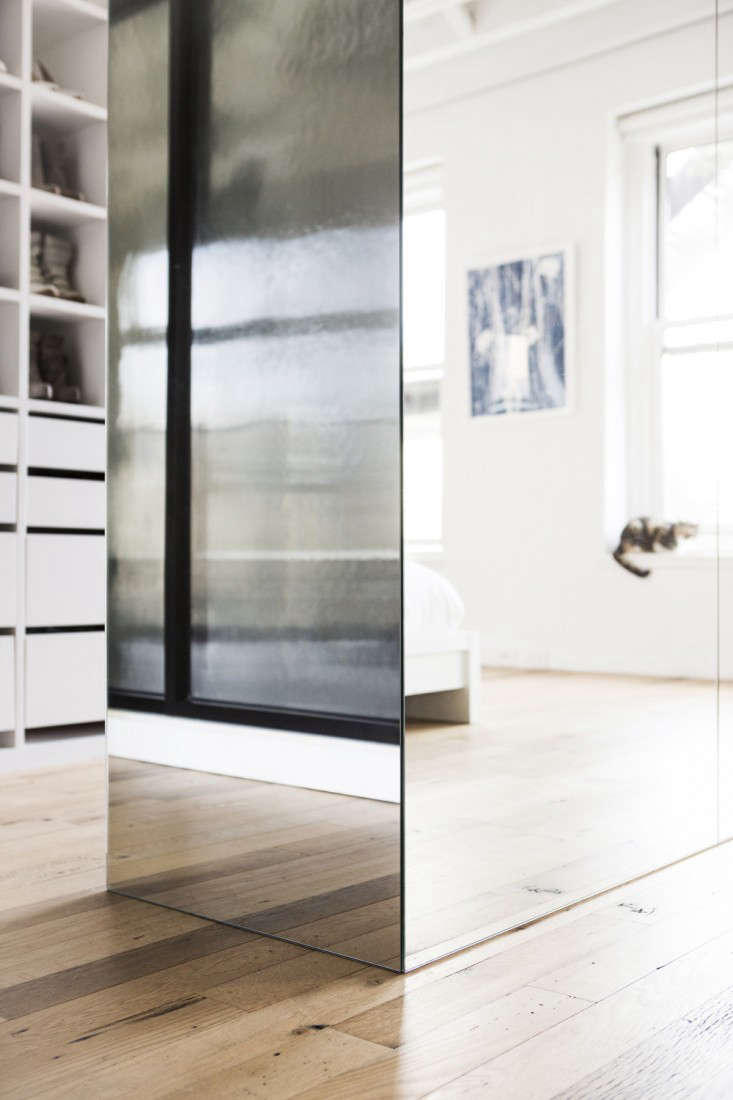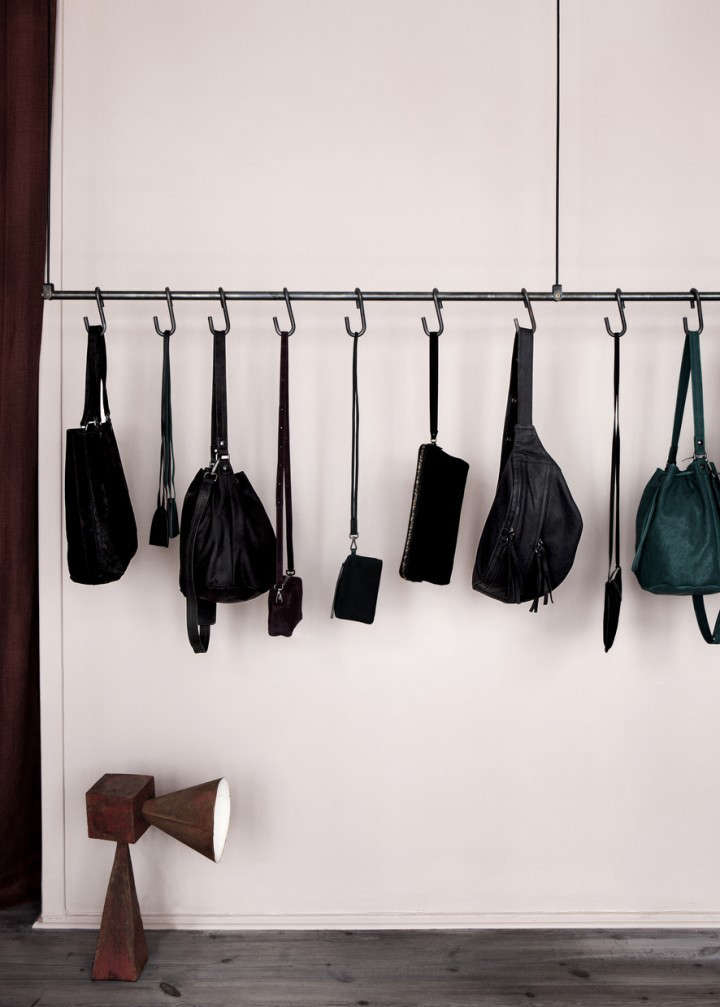
Heads up: Lighting the closet is unlike lighting anywhere else in the house. We turned to Remodelista guru Thomas Paterson, lighting designer and founder of London- and Mexico City–based Lux Populi, for guidance on how to handle the often confusing space. According to Paterson, closets call for flat, diffuse light, if you’re going to find what you’re looking for. Here, we address the essentials (stay tuned for next week’s Remodeling 101: Closet Lighting Part 2, How to Install Flattering Light).

Above: The well-lit dressing room of blogger Rayan Turner of The Design Confidential.
What is tricky about lighting a closet?
“The mission for lighting a closet is different from almost anywhere else in the home,” says Paterson. That’s because the goal here is not about achieving atmosphere but about adequately lighting everything inside, from top to bottom. In a packed closet, clothes are hard to find. And in a dark, packed closet, they’re almost impossible to locate. Paterson says that inadequately lighted closets can be especially frustrating for men because their clothes tend to look similar; it’s hard to distinguish navy wool pants from black ones, for instance. Women’s clothing tends to be more differentiated.
What’s the goal?
The goal is to eliminate shadows by getting a lot of diffuse light into the space. The variable factors are color (how warm or cool) and quantity (how much light).

Above: The Tweed walk-in closet system by Italian design group Poliform is illuminated by an abundance of diffuse lighting. (See more from Poliform in 10 Easy Pieces: Modular Closet Systems, High to Low.)
What is diffuse light?
“A standard white globe pendant light gives off the embodiment of diffuse light,” says Paterson. The translucent glass ball filters the light source (the lightbulb) and throws light indiscriminately. In another setting, this would be a bad thing: indiscriminate light will flatten a space and make it look lifeless. But that’s exactly what you want in a closet, because flat, diffuse light is best for seeing clothes clearly. Light diffusion is all about the fixture.
Above L: Ikea’s Regolit pendant shade is $4.99. Above R: Ikea’s Väte shade is $4.99.
Above L: Moving up on the price scale, one of Paterson’s favorite solutions is the Louis Poulsen AJ Eklipta Wall Sconce, a disk of blown glass ($428 at Y Lighting). Paterson says, “It’s a stylish classic from the 1950s, and looks at home anywhere.” Above R: The lights in situ; image via UK-based DM Lights.

Above: The lighting in the TriBeCa shop of La Garí§onne transitions from daylight at the front of the store to diffused artificial light at the back. See more in Sensuous Simplicity for the Thinking Woman: La Garí§onne in NYC.
What type of light do I want in my closet?
People like to see how they’ll look both in daylight and in glamorous evening light, so “the closets we light in higher-end homes will often have both cool and warm lights and the ability to switch between them,” says Paterson. For the rest of us, consider a 3,000 or 3,500 kelvin LED or compact fluorescent bulb. (The higher the kelvins, the cooler the quality of light: 4,000 to 6,000 kelvins is too cold for a closet, says Paterson.) Generally speaking, women prefer warmer light and men will find cooler light more helpful for spotting the subtleties among their darkest clothes.
Incandescents are not the best choice for closets because they produce a warm light, which is not ideal for knowing what your clothes will look like in daylight.

Above: This closet has the diffuse, ample light (and lots of space) required to see everything clearly. Image via Vogavoe.
How much light will I need?
In a small closet–one in which you can touch all walls standing in the middle–you’ll need the equivalent of 150 watts or 2,000 lumens of light. (You can use multiple bulbs and fixtures to add up to this amount.) As the closet gets bigger, multiply the wattage accordingly.

Above: White Alvar Aalto shelves hold well-spaced shoes at La Garí§onne.
What color should I paint my closet?
The ideal closet has white walls, white floors, and lots of mirrors so that light bounces around the space. If you want a dark closet, paint it a dark color but be sure to add mirrors, which will maximize the light.

Above: An elegant addition for maximum light in an open-space closet: a freestanding mirror box from the portfolio of Remodelista Architect/Designer Directory member Amee Allsop Design.
Any suggestions for lighting shoes?
The ample diffuse light prescribed here will light your shoes, even at the back of the closet. Just remember that a pair of black shoes in a pile of black shoes will always look black, no matter how much light you flood the space with. If you want to see your shoes, you need to space them out.

Above: Black leather bags–nicely spaced, ergo easy to see–hang against dusty pink walls in the Copenhagen boutique of fashion accessories designer Yvonne Koné. For more, see Copenhagen Cool: Yvonne Koné at Work and Home.
Does closet lighting pose a fire hazard?
Fluorescents are your best bet for safety, since incandescents get quite hot. But LEDs are equally likely to cause problems because their plug-in power supply can get hot. No matter what, make sure you don’t cluster clothes around lights or transformers. All fixtures and plugs need room to breathe.
Must all closet lighting be so practical?
No. Next week, see part two of our story in Remodeling 101: How to Install Flattering Closet Lighting.
Meanwhile, learn the ins and outs of home remodeling in our Remodeling 101 series:








Have a Question or Comment About This Post?